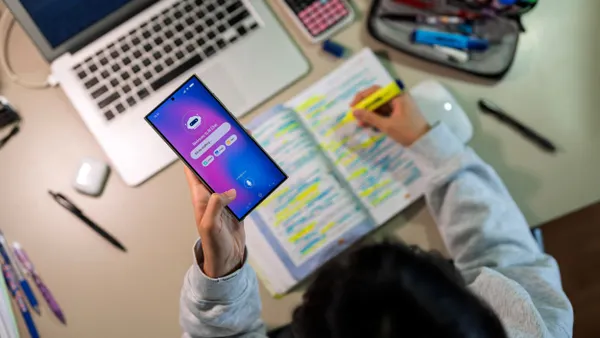Dive Brief:
- One of the greatest benefits of technology in early-childhood education is its ability to keep working parents connected to their children — and their children’s teachers — during the day, Chelsey Rodgers, a lead preschool teacher at the YMCA Early Learning Center in Columbus, OH, writes for eSchool News.
- Using a parent communication app like Bloomz, the center can share helpful information on topics such as early literacy and positive discipline, and teachers can give parents insight on what children are doing throughout the day.
- Now, when parents arrive to pick up their children, they’re not trying to catch up on reading memos or looking at their children’s work, because they’ve already seen it and can instead spend more time connecting in person with their children.
Dive Insight:
“Paperless communication allows us so much more flexibility and speed when it comes to contacting parents and families,” Rodgers writes. “We now encourage parents to message us electronically, so we get a notification on our classroom app and can get back to them in a timely manner. We post the children’s artwork and writing from around the classroom on a daily basis, as well as pictures of the kids.”
With recent data showing that children under 8 spend 10 times longer on mobile devices than they did in 2011, there are ongoing concerns about the appropriate use of technology in the early-childhood years. But Rodgers’ program is demonstrating to children how technology can be used to strengthen parent-child relationships and parent-teacher communication.
For very young children, even the American Academy of Pediatrics, which has continued to update its recommendations on screen time for children, notes that video-chatting with a parent or other loved one is an example of appropriate use.
Across all grade levels, schools and districts are using technology to give busy parents on-demand access to their children’s grades and assignments, reminders about events and links to community resources. But mobile technology shouldn’t replace opportunities for parents to have face-to-face communication with teachers and with each other. Earlier this year, for example, parents and teachers in a Colorado school district responded with mixed feelings after officials announced that teachers would no longer hold individual conferences with parents and were instead directing them to monitor their children’s progress through an online portal.













